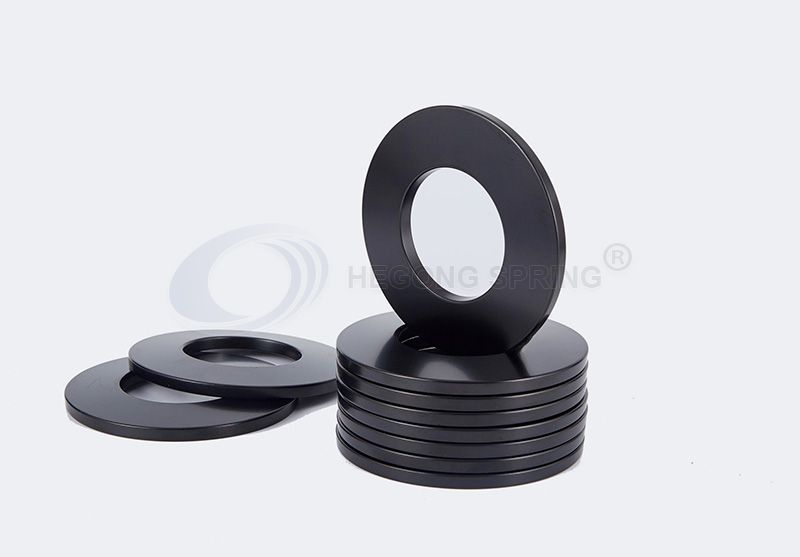1. Proper guidance and location of disc springs is essential to their performance, and will ensure that the desired characteristics and repeatability is achieved. Recommended guide clearances are shown in the tolerance tables, and it is also necessary to pay some attention to the nature of the guidance and seating surfaces.Much depends upon the severity of duty in the application, e.g. if the disc is to be used as a means of providing a static clamping force on ‘mild steel’ or cast/forged steel surfaces, this is probably satisfactory. However, if the seating faces are in aluminium, copper, brass etc; then it is preferable to provide a hardened thrust washer to alleviate face damage/indentation. Dynamic applications, involving large numbers of deflection cycles, will require that in addition to hardened seating faces the guidance surfaces must also be sufficiently hard to prevent excessive wear or ‘stepping’. For both support washers and guide elements, a polished surface with hardness of 58HRC is sufficient, and case depth should be 0.60mm min. Nitride hardening is permissible, providing that the hardened surface layer is adequately supported.
2. A most important aid to efficient and extended life of disc springs is the provision of some form of lubrication. For relatively low-duty disc spring applications, i.e. small numbers of deflection cycles, a liberal application of suitable solid lubricant, (e.g. molybdenum-disulphide grease), to the contact points and locating surfaces of the spring, is adequate.For more severe applications of a dynamic or highly corrosive nature, the disc springs will benefit from maintained lubrication, and are often housed in an oil or grease filled chamber.

1. If the application involves large numbers of deflection cycles, i.e. ‘dynamic’ application, or if the required forces or deflections are of a critical nature, we strongly recommend that you select from the range of disc springs that conform to the DIN 2093 specification.
2. From the range available, select the largest possible disc spring compatible with the desired characteristics. This will assist in maintaining the lowest possible stresses, thus enhancing the fatigue life, and in the case of stacked columns the greater deflection offered by the larger diameter springs will ensure the shortest possible stack length.
3. For static, or dynamic applications, select a disc spring that at 75% of its total available deflection offers the maximum force and/or deflection required. Between 75% deflected and the ‘flattened’ position, the actual force/stress characteristics become considerably greater than those calculated.
4. As a result of manufacturing processes, residual tensile stresses occur at d , the upper inside diameter edge, which will revert to normal compressive stresses when the disc spring is deflected by up to approximately 15% of its total deflection.The fatigue life in applications involving large numbers of cyclic deflections, will be drastically reduced by these stress reversals. For this reason alone, it is important that disc springs used in dynamic applications are pre-loaded to a minimum of 15% of their total available deflection.